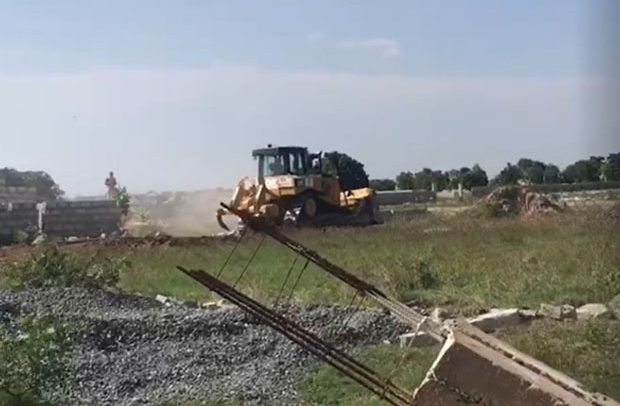Officials of the Greater Accra Regional Security Council in collaboration with the Ministry of Lands and Natural Resources has commenced demolishing of structures on waterways at the Sakumono Ramsar site.
It is the first phase of the exercise which involves the demolition of fenced walls in the core areas of the ramsar site.
This forms part of the move to help avert any possible flooding in the area.
The Sakumono Ramsar site is one of five wetlands of international importance which covers a total land size of 3,500acres. The site some years back was home to a number of migratory spices like birds and holds flooded ware and release them gradually into the sea and some farmers depended on water around the site for their all year round farming.
However, the situation is different as a result of heavy encroachment which has caused the ramsar site to lose all its importance to the environment albeit a state property with government fully paying for the land in 1992 gazetted the ramsar but illegal structures have taken over the ramsar site.
In June this years, the Greater Accra Regional Minister, Henry Quartey
at a Regional Security Council meeting asked encroachers to leave the site and warned others not to buy and develope any property at the ramsar site.
This compelled the Greater Accra Regional Minister to spearhead a demolition in the area to avoid any future catastrophe.
Speaking at the site, ahead of the demolition, the minister noted that occupants of the land have been given enough notification to leave adding that the move has been endorsed by traditional authorities there.
According to the Minister, the demolishing is in three phases with the first phase involving the demolishing of fenced walls, followed by structures and the complete reversal of the Sakumo ramsar site to government
“We’ve been talking about Ramsar in the last two months; we believe we’ve had over 70 days’ notice, which is enough for them. Any time we speak, they go ahead and build with impunity,” he said.
Originally spanning over 3,500 acres, the Sakumono Ramsar site is one of five in Ghana. It serves as holding bays for thousands of gallons of rainwater from the adjoining communities.
The exercise was undertaken by a joint taskfoce comprising the military, police and the immigration.
By Vincent Kubi


